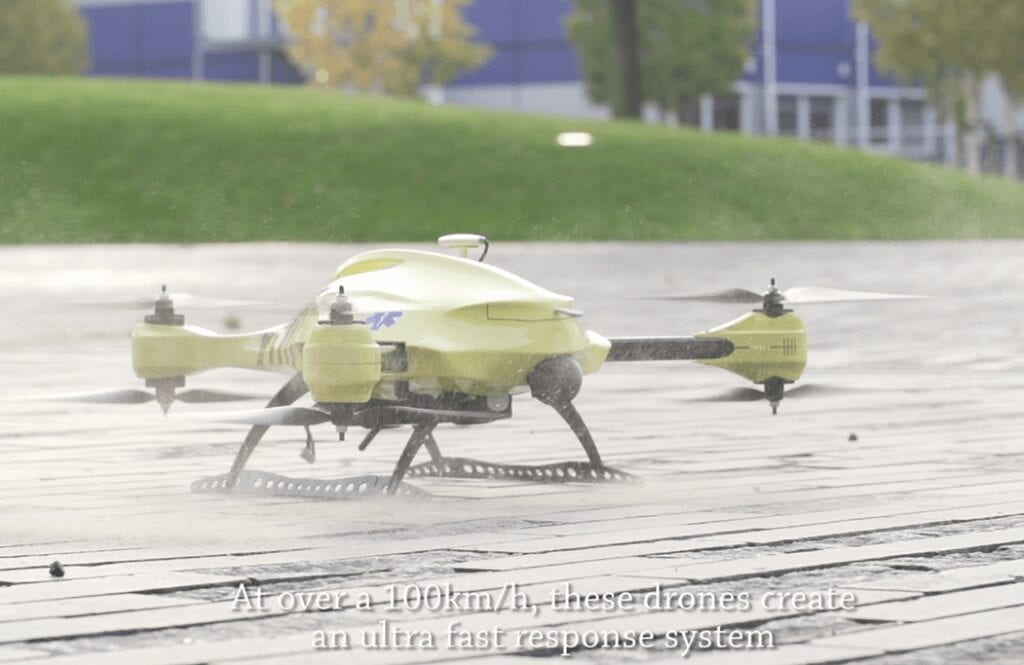
Sometimes, words just complicate things. What if our brains could communicate directly with each other, bypassing the need for language?
University of Washington researchers have successfully replicated a direct brain-to-brain connection between pairs of people as part of a scientific study following the team’s initial demonstration a year ago. In the newly published study, which involved six people, researchers were able to transmit the signals from one person’s brain over the Internet and use these signals to control the hand motions of another person within a split second of sending that signal.
At the time of the first experiment in August 2013, the UW team was the first to demonstrate two human brains communicating in this way. The researchers then tested their brain-to-brain interface in a more comprehensive study, published Nov. 5 in the journal PLOS ONE.
“The new study brings our brain-to-brain interfacing paradigm from an initial demonstration to something that is closer to a deliverable technology,” said co-author Andrea Stocco, a research assistant professor of psychology and a researcher at UW’s Institute for Learning & Brain Sciences. “Now we have replicated our methods and know that they can work reliably with walk-in participants.”
Collaborator Rajesh Rao, a UW professor of computer science and engineering, is the lead author on this work.
The research team combined two kinds of noninvasive instruments and fine-tuned software to connect two human brains in real time. The process is fairly straightforward. One participant is hooked to an electroencephalography machine that reads brain activity and sends electrical pulses via the Web to the second participant, who is wearing a swim cap with a transcranial magnetic stimulation coil placed near the part of the brain that controls hand movements.
Using this setup, one person can send a command to move the hand of the other by simply thinking about that hand movement.
The Latest on: Direct brain interface
[google_news title=”” keyword=”Direct brain interface” num_posts=”10″ blurb_length=”0″ show_thumb=”left”]
via Google News
The Latest on: Direct brain interface
- New Brain Circuit Identified in Mice That Controls Body’s Inflammatory Reactionson May 1, 2024 at 4:01 pm
Future research could identify drugs that can target this newfound brain circuit to help treat a vast range of immune disorders and diseases.
- Super-detailed map of brain cells that keep us awake could improve our understanding of consciousnesson May 1, 2024 at 11:50 am
A new map of a brain network that sustains wakefulness in humans could help improve our understanding of consciousness.
- Optimized Multisensory Interface for Precise Liquid Pouring by Robotson April 30, 2024 at 5:47 pm
In a recently published article in the journal Actuators, researchers from the USA introduced an advanced multisensory interface for robots to pour liquids accurately. Their system offers detailed ...
- Scientists identify new brain circuit in mice that controls body's inflammatory reactionson April 30, 2024 at 5:00 pm
The brain can direct the immune system to an unexpected degree, capable of detecting, ramping up and tamping down inflammation, shows a new study in mice. The brain can direct the immune system to an ...
- China Has a Controversial Plan for Brain-Computer Interfaceson April 30, 2024 at 12:12 pm
China's brain-computer interface technology is catching up to the US. But it envisions a very different use case: cognitive enhancement.
- What $200 Million In Crypto Cash Means For Blackrock Neurotechon April 30, 2024 at 11:08 am
Inside this week's $200 million funding deal of Blackrock Neurotech: Where will the money go, and what does it mean for the industry?
- Tether puts $200mn into Blackrock Neurotech as a strategic investmenton April 30, 2024 at 7:49 am
Tether announced a strategic investment of $200 million in Blackrock Neurotech, the globally leading pioneer in Brain-Computer-Interface (BCI) technology.
- Dutch startup to test hearing via brain-computer interfaceon April 30, 2024 at 6:23 am
MindAffect has raised new funding for its hearing diagnostics solution that uses brain-computer interface technology.
- Tether Acquires Stake in Brain-Computer-Interface Firm Blackrock Neurotechon April 30, 2024 at 5:42 am
Tether, which claims to be one of the largest companies in the digital asset industry, announced that it has made a strategic investment.
- China developed its very own Neuralink — Neucyber brain interface comes from a neurotechnology firmon April 27, 2024 at 4:35 am
A Chinese company backed by the state, Beijing Xinzhida Neurotechnology, introduces its Neucyber brain interface tested with a monkey and a mechanical arm.
via Bing News









